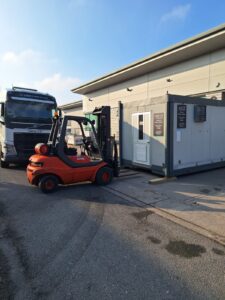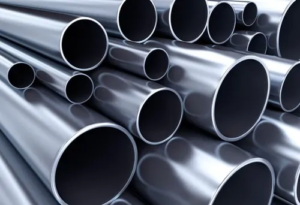The Structural Benefits of Closed-Cell Spray Foam in Marietta, OH
Closed-cell spray foam significantly strengthens building structures by enhancing wall rigidity, resisting moisture, and stabilizing surfaces against shifting or deformation. In Marietta, OH, where seasonal temperature shifts and humidity can impact structural materials, this rigid foam offers long-term durability and added resilience to both residential and commercial properties.
This article explores how closed-cell spray foam in Marietta, OH contributes structurally beyond insulation, including how it performs under pressure, adheres to surfaces, and interacts with other materials over time. We also cover technical specs, application contexts, and critical considerations before selecting this material for structural enhancement.
Structural Reinforcement with Closed-Cell Foam
Closed-cell spray foam is dense, rigid, and adhesive, creating a solid matrix that reinforces wall systems and reduces flex. It effectively binds studs, sheathing, and framing members into a more unified structure. This reinforcement improves racking strength, which helps buildings resist lateral forces such as wind or shifting soil.
Primary Structural Gains in Marietta, OH:
- Improved wall and roof deck rigidity
- Increased resistance to wind uplift
- Reduction in air infiltration that could degrade structural elements
- Mitigation of moisture damage that weakens framing over time

Key Technical Properties of Closed-Cell Spray Foam
Closed-cell foam offers specific mechanical advantages due to its physical structure. Its cellular composition is compact and impermeable, contributing to strength, stability, and water resistance.
Technical Specification Table
| Property | Closed-Cell Spray Foam |
| Density | 1.75 – 2.2 lb/ft³ |
| Compressive Strength | 25 – 35 psi |
| Tensile Strength | 30 – 50 psi |
| Dimensional Stability | < 2% change |
| Vapor Permeability (perm) | < 1.0 |
| Adhesion to Substrate | Excellent |
| R-Value per Inch | 6.5 – 7.2 |
These technical traits directly relate to how well the foam supports load-bearing surfaces, especially in older buildings with weaker framing or inconsistent materials.
How Closed-Cell Foam Stabilizes Structures
Wall Strength and Shear Resistance
Closed-cell foam forms a hardened layer between studs that helps resist “racking,” or sideways force applied to a wall. This is especially valuable during storms or seismic shifts.
Bonus Tip: When applied properly, closed-cell foam can add up to 300% more racking strength to framed wall systems, especially when paired with structural sheathing.
Moisture Protection and Material Longevity
Closed-cell foam acts as both insulation and a Class II vapor retarder, preventing internal condensation that can lead to rot or mold. By keeping the cavity dry, it preserves structural integrity over time.
Roof Deck Reinforcement
Foam applied to the underside of roof decks can reduce uplift forces in high-wind zones, effectively binding roof sheathing to rafters. This approach is used in hurricane-prone areas and provides resilience against severe Ohio storms.
Comparison Table of Insulation Materials and Structural Impact
| Feature | Closed-Cell Foam | Open-Cell Foam | Fiberglass Batt | Cellulose |
| Structural Rigidity | High | Low | None | None |
| Water Resistance | High | Low | Very Low | Low |
| Vapor Barrier Capable | Yes | No | No | No |
| Racking Strength Improvement | Yes | No | No | No |
| Adhesion to Substrate | Strong Bond | Moderate | None | None |
| Use in Load-Bearing Walls | Recommended | Not Suitable | Not Recommended | Not Recommended |
Local Considerations in Marietta, OH
Environmental Factors
Marietta experiences wide temperature swings and frequent humidity, both of which can degrade untreated framing and sheathing. Closed-cell foam provides a protective envelope that reduces structural movement caused by moisture expansion and contraction.
Bonus Tip: In older homes with balloon framing or irregular cavities, closed-cell foam adheres tightly to non-uniform surfaces, filling gaps and adding structure where traditional materials fall short.
Energy Codes and Structural Benefits
Ohio building codes recognize closed-cell foam as a dual-function material: insulating and air sealing. In structural retrofits, this allows builders to meet both thermal and structural objectives in one application.
Things to Consider Before Making a Decision
Before selecting closed-cell foam for structural purposes, consider these factors:
- Wall Composition: Foam works best when sprayed directly onto wood, metal, or concrete. Surfaces must be clean and dry.
- Budget Constraints: Closed-cell is more expensive than open-cell or batt insulation but delivers higher mechanical strength and long-term value.
- Application Access: Retrofitting requires removal of interior finishes unless applied from the exterior during major renovations.
- Project Type: It is ideal for attics, crawlspaces, wall cavities, and underside roof decks in both residential and agricultural buildings.
- Climate Zone: Marietta’s mix of humid summers and cold winters makes moisture resistance and structural reinforcement essential.

Common Questions About Closed-Cell Structural Use
Does closed-cell foam support load-bearing walls?
No, but it reinforces the integrity of the wall system, reducing flex and distributing pressure evenly across structural members.
Will it prevent future movement or settling?
It can reduce minor shifts caused by thermal expansion or air infiltration but won’t prevent movement from foundational issues.
Can closed-cell foam be used with all wall types?
It performs best in standard stud-framed walls. For stone, block, or old masonry, bonding may vary based on surface prep.
Does it replace the need for sheathing or bracing?
No. It enhances structural rigidity but does not replace traditional structural framing or engineered bracing systems.
Closed-Cell Spray Foam in Building Retrofits
In historic areas of Marietta, many homes have aging framing or non-standard construction. Closed-cell foam allows these buildings to gain modern structural benefits without invasive reconstruction.
Application Use Cases:
- Stabilizing bowed walls or soft ceilings
- Reinforcing crawl space joists and beams
- Preventing future degradation from air and water infiltration
Market Insight
According to IBISWorld, demand for high-performance insulation systems like closed-cell foam has grown by 5.6% annually in residential retrofits across the Midwest due to its dual air seal and structural benefits.
Marietta’s increasing interest in sustainable, durable building materials makes closed-cell foam an important part of long-term structural planning.
The Structural Benefits of Closed-Cell Foam FAQ
Can closed-cell foam help with sagging floors?
It can stabilize joists and beams by bonding to surfaces and limiting air/moisture degradation, but it doesn’t lift or jack the structure.
Is it suitable for use in pole barns or metal buildings?
Yes. It adheres well to metal, enhances rigidity, and provides a moisture barrier ideal for large, unconditioned spaces.
Will it crack over time?
No, when installed correctly, closed-cell foam remains dimensionally stable and resists cracking under temperature or pressure fluctuations.
Can closed-cell foam be used under slab or concrete?
Yes, when designed for below-grade use, it adds compressive strength and moisture protection under slabs or footings.
Does this type of foam meet Ohio building code for vapor barriers?
Yes, closed-cell spray foam under 1 perm qualifies as a Class II vapor retarder, compliant with Ohio code for many assemblies.
Make the Right Decision
Closed-cell spray foam provides exceptional structural benefits for buildings in Marietta, OH, offering superior density, bonding strength, and moisture resistance. This makes it an ideal choice for reinforcing wall systems and roof assemblies. Ohio Valley Spray Foam understands that every project has unique needs, and the team is here to help you determine if this rigid foam is the best fit for your building’s structure. Whether you’re considering it for a home or commercial project, we’ll guide you in selecting the right materials and integration techniques.
Contact a spray foam insulation company today to discuss how closed-cell spray foam can enhance the durability and performance of your building. Reach out to Ohio Valley Spray Foam at sprayfoamllc@yahoo.com or call (740) 629-9984 for expert advice and trusted insulation solutions.
Reviewer: With 11 years in the spray foam field, Aiden Baker reviewed this content and provided advice on building steady growth through practical, honest communication.













